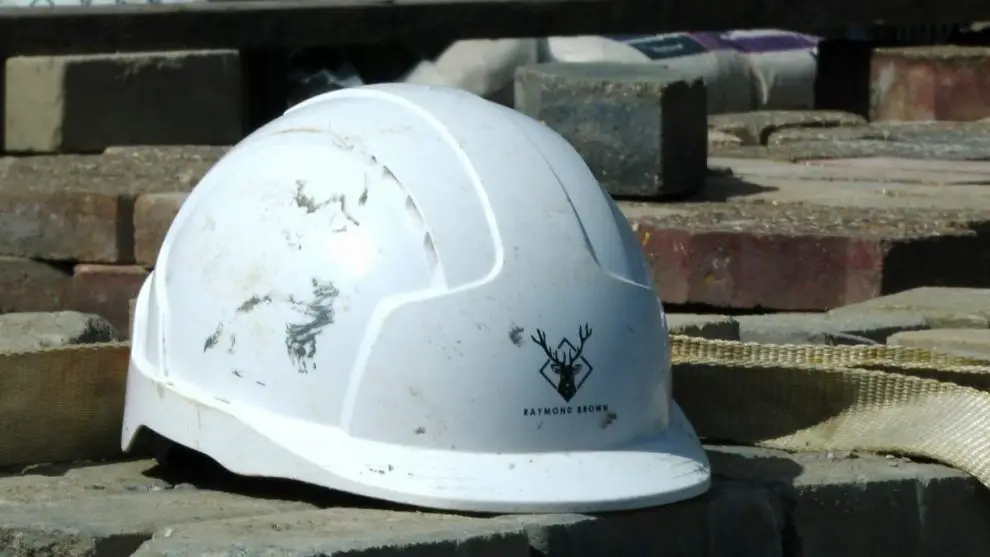
If you are in the construction industry and make use of, or supply hard hats to your construction workers, you will want to know how often hard hats should be inspected for safety.
The answer is that hard hats should undergo a safety check every six weeks, but this is not set in stone. If there have been incidents, the hard hat should be checked immediately after the incident. Sometimes, hard hats look okay on the outside after an incident, but are weakened or have a damaged suspension.
Hard Hats Need To Undergo Rigorous Safety Checks or Inspections
It’s all very good wearing a hard hat, but your hard hat is subject to wear and tear and it too has a ‘sell by’ date. If the hat that you, or your staff are wearing is not checked on a regular basis, it may not do the job it is meant to do. Check out the guide on how often to replace hard hat.
This means your hard hat must undergo inspection on a regular basis. It is hard to say exactly how often a hard hat should be used, simply because each construction site or job is different. For safety’s sake, we will say a hard hat should be inspected once a month, but of course this can vary.
Who does the Hard Hat Inspection?
Who checks the hard hats is dependent on the type of workplace and the structures put in place. It can be:-
-
-
- Head of the health and safety committee.
- Head of construction.
- Designated foreman.
- The construction worker
- An outside health and safety team.
-
Regular Hard Hat Checks Are Vital
Many companies choose to inspect a hard hat on the first day of each work week. Some inspect a hard hat every single day, before the worker commences construction. When the work is ‘lighter’ or less dangerous or hazardous, a bi-monthly check is okay, or even a monthly check.
Don’t Let An Accident Happen
Hard hats are checked to prevent accidents and to ensure the safety of the worker. If there have been incidents on site, such as falling debris, a fall, or any dangerous encounter, the hard hat should be checked immediately after the incident.
Sometimes, hard hats look okay on the outside after an incident, but are weakened or have a damaged suspension. It is extremely dangerous to allow a worker to continue work with a damaged hard hat. It is an accident waiting to happen.
The Dangers Of A Weakened Hard Hat
Wearing a hard hat that is damaged or weak can be as hazardous as wearing no hard hat at all. Construction workers deserve safety. They are working hard, they are working in difficult conditions at the best of times, and they are doing dangerous work.
Some of the difficulties that a construction worker can encounter, although should not encounter if all safety checks are done, can include:-
-
-
- Falling objects.
- A partial (or full) scaffolding collapse.
- A fall.
- Electrical shocks / general electrical dangers.
- A partial (or full) trench collapse.
- Fire
- Accidents from machinery or tools.
-
All of the above, and there are many more dangers, can be avoided if good safety checks and balances are put in place, safety nets are provided, and by providing the construction worker with the right work gear.
Even when the worker has the right gear, regular inspections must be done. There is no point in the worker wearing a hard hat that is not going to protect him.
Saying that, accidents happen. And when an accident does happen, the construction worker needs a hard hat that will protect his head from serious injury. A weakened hard hat is insufficient.
By providing your workers with the right work gear, you are not just protecting them. You are protecting yourself, as the manager / boss / owner / construction company, from future lawsuits.
What Should A Hard Hat Inspection Involve?
There are several types of hard hats on the market but most hard hats have the same three parts.
-
-
- A shell.
- A suspension system
- A chin strap
-
Each component requires inspection. Sometimes maintenance is enough to fix a slightly damaged hard hat and ensure it is in full working order, other times a new hard hat is required.
1.) The Shell Of The Hard Hat:-
There are different kinds of shells on hard hats. Some have a full shell, others have a cap shell. There are shells made of carbon fibre and others made of kevlar. You need to do your research to decide which hard hats are right for your construction site or for yourself, as the construction worker.
All the shells on a good hard hat come with some form of cushioning for comfort, and some come with ‘extras’ for the heat, cold, or general comfort. A shell, no matter which color it comes in, must be inspected regularly, maintained well, and when needed, replaced in full.
2.) The Suspension System
This is the most important aspect of the safety hat as this is the part that absorbs the blow to the head. There are different suspension systems, just like there are different shells. When you buy your hard hat, or before you buy a number of hard hats for your workers, check that the shell and the suspension are best for the particular job. Inspections must include inspections of the suspension system.
3.) The Chin Strap
This is the strap that keeps the hard hat in place. There is honestly no point in wearing a safety hat without the strap. If a worker is struck on the head by a hazardous object, and the chin strap is not working, the hat will get knocked off. There will be no, or not enough, protection.
Also bear in mind that construction workers often find themselves at dizzying heights. It can be windy up there. A chin strap keeps the hard hat on.
Chin straps wear out. They are the part of the hard hat that a construction worker fiddles with daily, putting the hard on and off and adjusting the strap. Chin straps can be replaced, but a good inspection will stop a chin strap from breaking and causing a potentially dangerous situation.
A Few Rules Regarding Protective Hard Hats
-
-
- Keep a logbook with the date of purchase of the hard hats.
- When you hand a hard hat over, right down the date of first use.
- This date should be written in a safety logbook, and in the hat.
- The wearer’s name should be written in the hat too.
- Note the dates for the next inspection in the logbook.
- You can note the dates for the next inspection in the hat too.
- Ensure the inspections take place as per the logbook.
- Workers must know if their hat is damaged, or they have any hazardous encounter, they should bring their hard hat in for immediate inspection.
- Safety must always be reinforced.
- The onus on safety is on the construction company.
-
While the onus of safety is on management, construction workers should also know how to inspect their own safety equipment. Here are some simple guidelines for inspecting a safety check on hard hats, but note proper inspections must be done on a regular basis.
1.) Check the shell
Check for dents, gouges or cracks. If there are any, take action immediately. Remember, a few scratches are the nature of the job. But a dent or a nick is not, and cracks are dangerous.
Use your hands, one on either side of the hard hat, and compress it without dropping the helmet. The shell should return to its original shape, easily, and with good elasticity. If it doesn’t, replace or maintain it, quickly.
2.) Check the suspension
Check the suspension for signs of wear and tear. Look for dents, gouges or cracks, just like on the shell. If there is a loss of elasticity, or any signs of wear and tear, replace the suspension gear or get a new helmet, quickly.
You can also compare your safety helmet to a new one. You will be able to tell pretty quickly if something is wrong with yours.
3.) Check the chin strap
Do not wait for the chin strap to break. If the strap is fraying (a little fray is okay, a lot of fray is extremely dangerous) get a new strap.
If you’re looking for right hard hats for construction check out the video below
Final Notes On Hard Hat Inspections
As we say, how often you undertake a hard hat inspection depends on the work. As we said above, sometimes hard hat inspections take place daily. Other times, weekly. Some workers are exposed to more dangers than others.
A good indicator for ‘low risk’ construction work would be to inspect your hard hat once every two weeks. In high risk situations, daily hard hat inspections are a good idea.
Either way, never let safety become an issue. A good hard hat will last a long time and you should always buy good quality so you do not have to worry about your own, or your worker’s lives.







